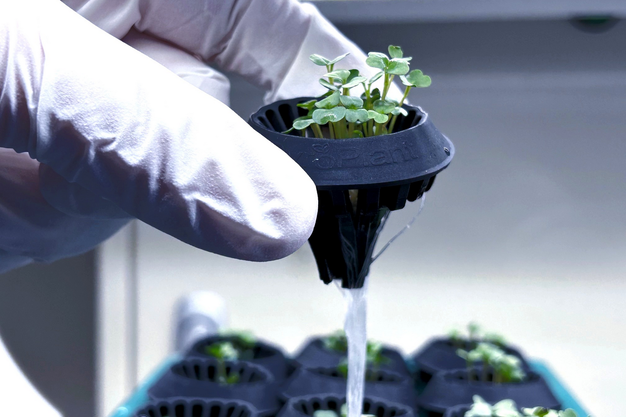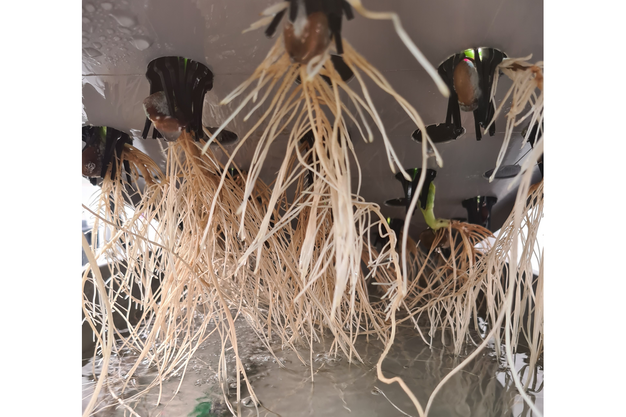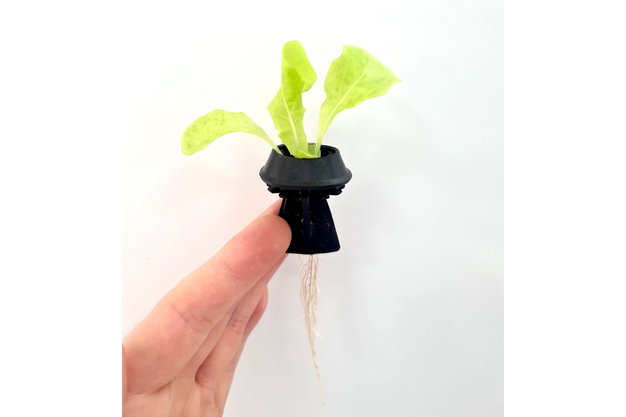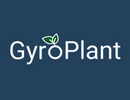"There are other substrate alternatives on the market which claim reusability. However, it's important to note that these products cannot easily be reused, often because it's too difficult or time-consuming to clean or the processing required is too costly. Therefore, unfortunately these products lose the cost-benefit of reusability if becoming sustainable costs growers, they won't do it," says Marcus Comaschi, Founder and CEO of Gyroplant.
Gyroplant, the creator of the GyroCup, is a substrate alternative because of its reusability. This instantly eliminates the need to buy new substrates every harvest, with all the carbon emissions created by processing virgin products, delivering them (mostly internationally), and disposing of them at end-of-life.
"Compare these products with our design, which is crafted from a single material, 100% food-grade silicone rubber. This is done without any separate parts, seams, or plastic which is typically hard to clean, meaning no crevices for bacteria to grow in. It's so easy to wash, you literally only need to rinse it in water. The design can be integrated into most CEA setups without drastic retrofitting. Our products might seem deceptively simple, but their designs are backed by strong engineering principles and tested rigorously by many CEA farms of varying designs and sizes."

The GyroCup
Less materials and less carbon
According to Marcus, the independent LCA produced in 2023 shows that using GyroCup makes significant carbon emissions savings compared to the market-leading substrates, saving 93% CO2e compared with using rock wool and coir and saving 95% CO2e compared with using peat over a 5-year period. "And that's just the carbon footprint, which is only one of the many elements of the wider sustainability transition that we want to see. On top of that, GyroCup requires fewer chemicals and pesticides to be used in indoor farms."
"Many are moving away from peat-based substrates, as they are aware of the environmental harm conventional substrates are causing. But why stop at making conventional single-use substrates more sustainable, why not get rid of them altogether?"

Moving away from risks
Marcus explains that substrate-free growing gives growers a heightened level of control that they can't easily achieve if they remain with the conventional substrates used today. A completely inert material like GyroCup (silicone rubber) is complemented with antibacterial additives and hydrophobic properties. This serves to drastically reduce the risk of mold and algae growth as well as being unattractive to pests, and eliminates the risk of pathogen contamination from the substrate to the crops. This higher level of control leads to more predictability with yield and better quality produce.
A widespread culture change is required to make the move to substrate-free growing. But it is the logical conclusion when you apply engineering first principles to the problem of substrates in CEA. This is why we are seeing so much interest from the space tech industry - they have to think very logically with systems thinking and resilience in mind.
Less labor
Throwing away a cube of substrate is certainly easier and quicker than re-using. However, in some ways, "we see GyroCup saving farms time, especially relating to cleaning, which is a common occurrence in indoor farms," says Marcus. One of the two aims of a current R&D project is to find ways to integrate the product into the automated processes. By fixing GyroCups to a tray, for example, the team will be able to automate seeding and cleaning - and therefore reduce labor and cleaning even more.

Proper root development
How much does it cost you?
Upfront costs growers pay for substrate and the hidden costs relating to substrates, which they are usually not fully aware of. Relating to the first cost - GyroCup is naturally more expensive than single-use substrates as it's made of durable silicone rubber. Having said this, the team is expecting growers to make back this investment in GyroCup in approximately one to two years if bought in bulk.
"If we add the hidden costs into the calculations, we think GyroCup is well worth the investment. Due to GyroCup's consistency, there is reduced contamination from microbes or bacteria from the substrate. Due to GyroCup's cleanliness, there are fewer labor hours required for cleaning, as there will be no mold and no need for plastic net pots. Furthermore, you can forget about the procurement, storage, packaging handling and disposal at the end of each harvest with GyroCup."

Expansion plans
"Currently, we are seeing the most success with high-value crops (e.g., strawberries). As these farms are most concerned about quality and consistency. Companies in the pharmaceutical, nutraceutical, and cosmetic industries are contacting us more often now. This is on top of the interest shown by space tech," says Marcus.
However, the startup just launched a new product, GyroSnap, which is designed for the smaller seeds. Whilst GyroCup needed a small amount of substrate (seed tape, or hydrogel), in order to germinate small seeds, GyroSnap can germinate the seeds without any substrate at all, because its two-flap design draws up water naturally ('capillary action' effect), to a much greater extent than GyroCup.
 For more information:
For more information:
Gyroplant
Marcus Comaschi, Founder and CEO
www.gyroplant.com
